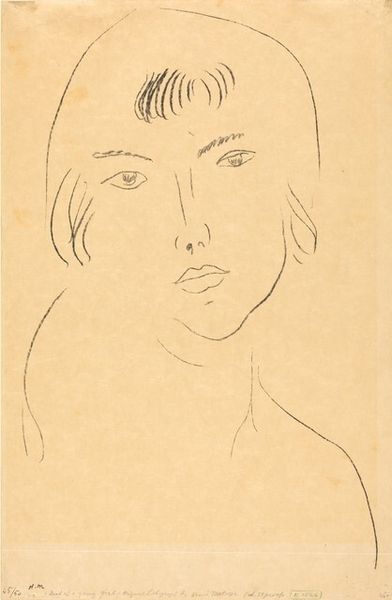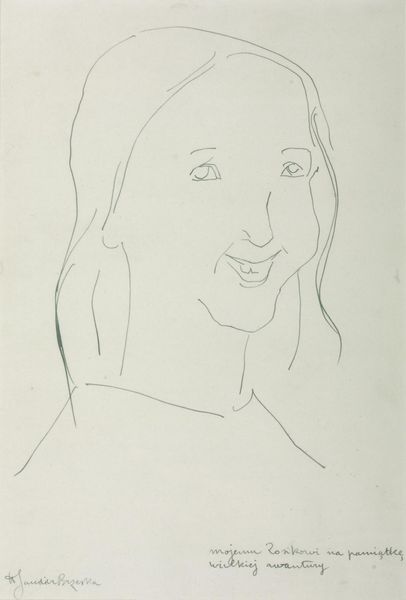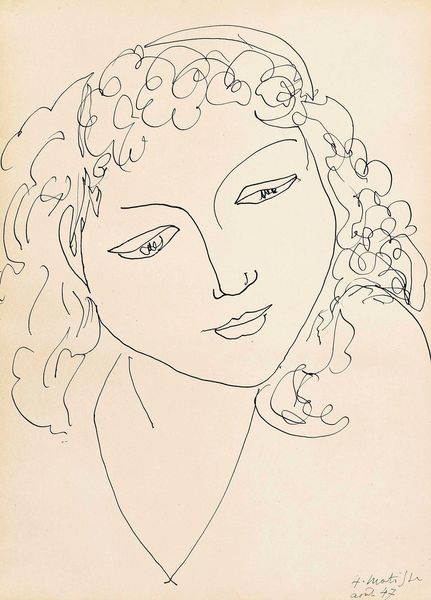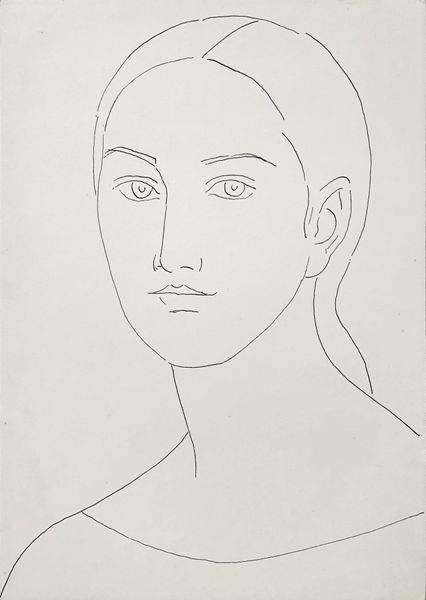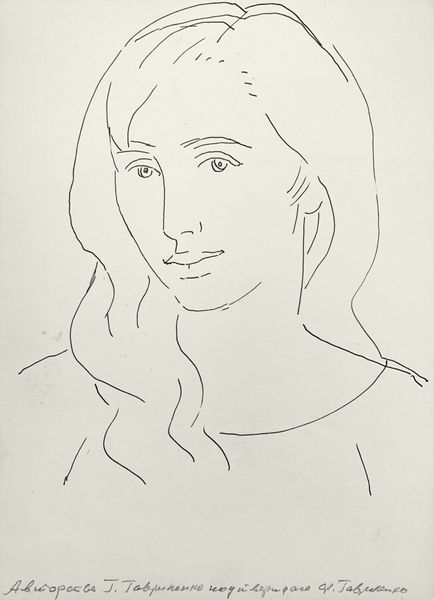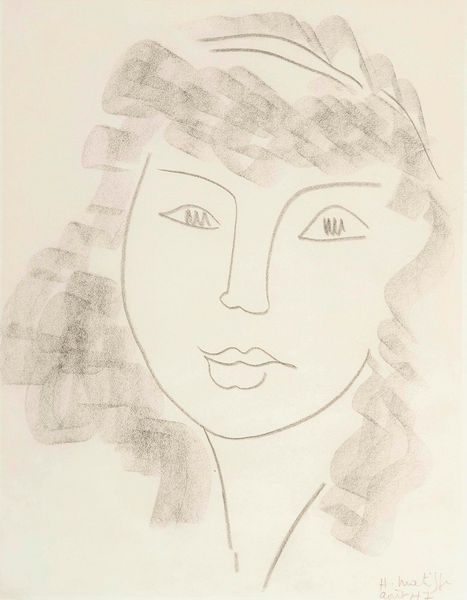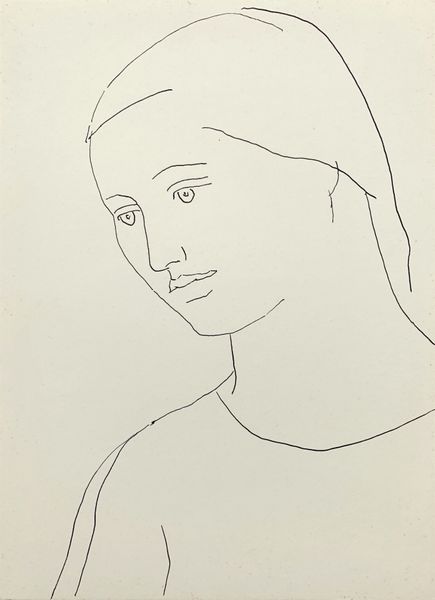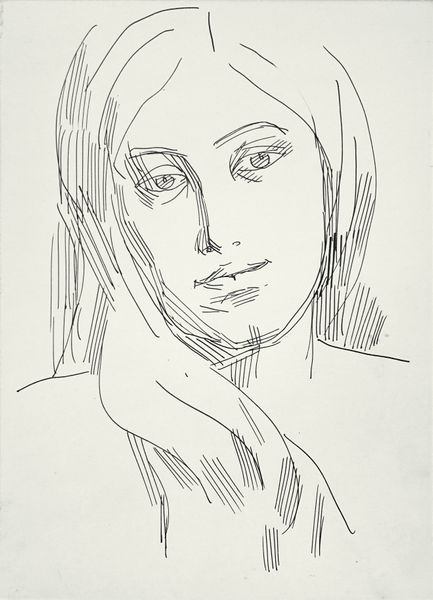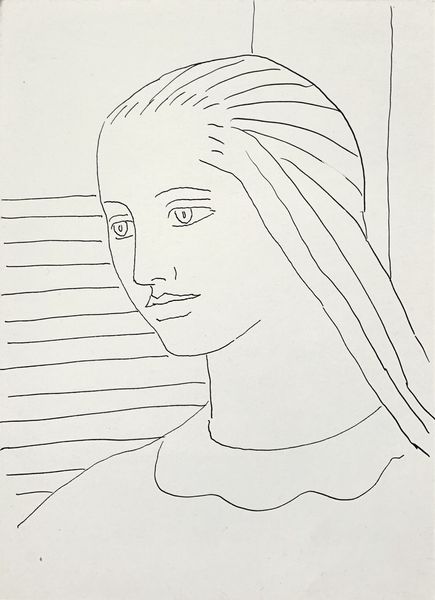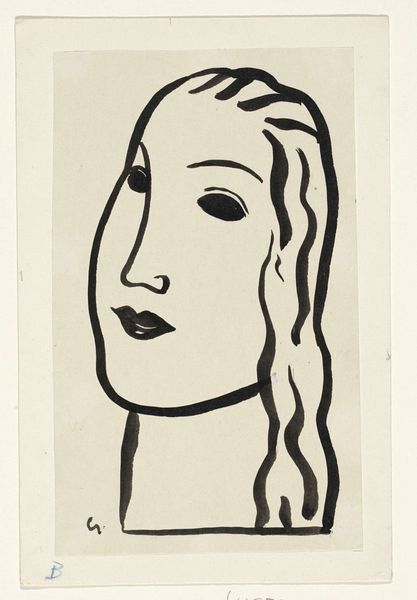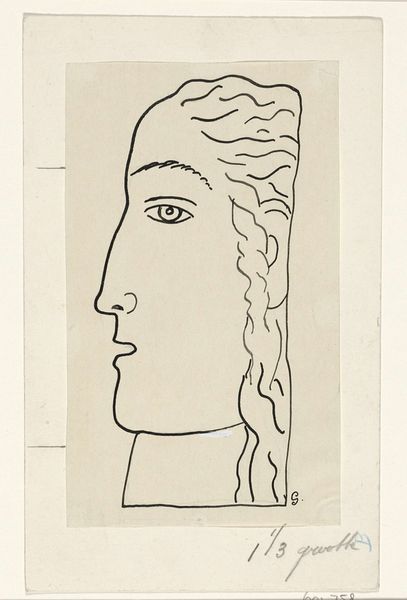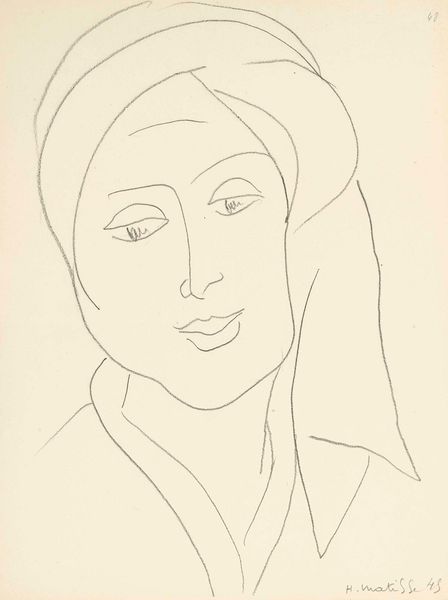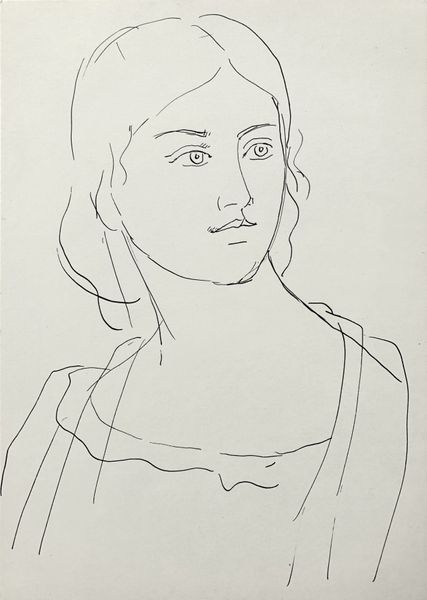
drawing, print, paper, ink
#
portrait
#
drawing
# print
#
figuration
#
paper
#
ink
#
line
Dimensions: image: 21.8 x 19.8 cm (8 9/16 x 7 13/16 in.) sheet: 50.1 x 22.5 cm (19 3/4 x 8 7/8 in.)
Copyright: National Gallery of Art: CC0 1.0
Curator: Here we have Henri Matisse's "Study for The Virgin," a print rendered in ink on paper, dating from 1950-1951. It's quite simple, isn't it? Editor: Strikingly so! It’s like a distillation of the essence of ‘Virgin’, capturing purity and serenity through such minimal lines. There’s an almost Byzantine quality in the stylized eyes. Curator: That minimalism speaks volumes, doesn't it? We have to remember this was created later in Matisse’s life. How do you think his career and, indeed, the history of the depiction of the Virgin impacted a study like this? Editor: Well, historically, the Virgin is laden with symbolic weight: motherhood, purity, divine grace. Matisse strips all of that away and presents an almost iconic image of serenity. And consider its place historically – mid-20th century. Perhaps it represents a longing for spiritual simplicity after decades of war and upheaval? Curator: Interesting! And look how Matisse uses line. The contour is continuous, creating a sense of flow and unity. Note also, there’s very little shading to suggest dimension, but the emotional impact remains. It’s interesting, isn't it, how our memory and learned understanding fills in those missing dimensions? Editor: Precisely! We, as viewers, bring so much of our cultural understanding of the Virgin to the work, even with this seemingly simple line drawing. The eyes are what hold me – there's a calm wisdom in their gaze. It feels remarkably modern, even now. Curator: And considering its origins as a preparatory drawing, it presents a fresh vision of such a significant figure that carries tremendous iconographic meaning through ages and cultures. A perfect case study on line as the essence of form. Editor: I think, despite its pared-down quality, it demonstrates the potency of visual shorthand, both artistically and historically. It really does invite the viewer to contemplate the continuing influence and legacy of the Virgin Mary in a whole new context.
Comments
No comments
Be the first to comment and join the conversation on the ultimate creative platform.
